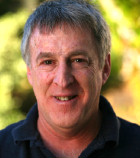GAM 2012 Blog
|
April 1 By Mike Simmons |
Back to the GAM Blog |  |
| How did we get here? Global Astronomy Month began just two years ago with a fairly low key event meant to keep alive the spirit of its famous progenitor, 100 Hours of Astronomy of the International Year of Astronomy 2009 (IYA2009). Who would have expected that in this short time it would become the world’s largest annual celebration of astronomy? Certainly not me. So how did this happen? | ||
Perhaps it was just good timing. IYA2009 had raised awareness of astronomy to a new level worldwide, engage more people than ever before, and showing the enthusiasm that exists in every country and culture. But that was an unprecedented effort by the world’s professional organization, the International Astronomical Union (IAU), with support from UNESCO. Astronomers Without Borders (AWB), founded in 2007 and hardly a player on the world stage three years later, could never hope to emulate it.
Perhaps it was the IAU’s “discovery” of amateur astronomers during IYA2009. There are thousands of sidewalk astronomers and others around the world who spend their spare time sharing their passion with anyone who is interested (and just about everyone is). They were instrumental in carrying out the IYA2009 mission to reach as many people as possible. They were most of the 100 Hours of Astronomy effort as well, when more people were engaged than in any other event of the year. But the astronomy die-hards had been there all along, working in relative anonymity in their own countries. What inspires them to work together as one big global community?
Perhaps it was just time for something like GAM to come along. The technologies that allow us to communicate and share our activities with others, regardless of where or who we are, have made efforts like this possible. Imagine organizing a global event without Facebook, Twitter and other social media, or even the Internet. That’s how things were just a few years ago. How did we ever manage without these tools? But is it just new tech that made this happen?
I think it’s something more basic. All these factors have had important roles in building the global astronomy community but they weren’t enough by themselves to propel Astronomers Without Borders and Global Astronomy Month forward so quickly. I think there’s more to it, something unique to astronomy. It’s embodied in Astronomers Without Borders’ mission to bring us together through our shared passion for the wonders of the Universe. It’s the source of AWB’s success as a start-up organization as well. GAM’s and AWB’s successes couldn’t have happened without the technologies, good timing and, most importantly, the people who have taken part. But it’s the passion that motivates those people in great numbers. They’re a force of nature that can’t be created or duplicated. And like other forces of nature, once it gets going it’s unstoppable.
One People, One Sky is Astronomers Without Borders motto. What other science can make such a claim? What other science has avid hobbyists, a fascinated public and a role in every culture throughout time? What other science – or interest of any kind – can claim the ability to unite people this way? We share the same sky. That’s it. What could be more basic?
Astronomy is something that seems to me to be almost genetic, as though our ancient ancestors have passed down a need to understand our place in the cosmos through countless generations. The interest is that universal. Just look at the crowds that come out to every astronomy event in any country. Not just us science geeks but everyone regardless of their primary interests or beliefs. Look at the growing list of arts programs in GAM 2012 with artists and others we’d never think of as core astronomy enthusiasts taking part. It’s as though we’re wired to respond to the Astronomers Without Borders call to connect us all through that passion. We hit a nerve, so to speak.
I think Global Astronomy Month, and Astronomers Without Borders itself, have been successful because they fill a need that has always been there – to share our innate passion for the Universe with our fellow travelers on Spaceship Earth. We aren’t just individual inhabitants of this planet. We are children of the cosmos traveling through space together. This isn’t just idle curiosity. It’s far more fundamental. We’re one family. We may be a highly dysfunctional family much of the time but as citizens of Earth we come together again, just like any family. One People, One Sky.
As I write this, GAM 2012 is off to an auspicious start. The International Asteroid Search Collaboration (IASC) special program for GAM 2012 has announced two new asteroids discovered by participating schools, one in China and the other in Nicaragua. What a start to a celebration of astronomy! Congratulations to the student discoverers, and clear skies to all.
|
|
Mike Simmons is the founder and president of Astronomers Without Borders. No stranger to organizing global programs, Mike was was co-chair of 100 Hours of Astronomy in the International Year of Astronomy 2009. Mike has been an amateur astronomer involved in public outreach and education for 40 years. |








